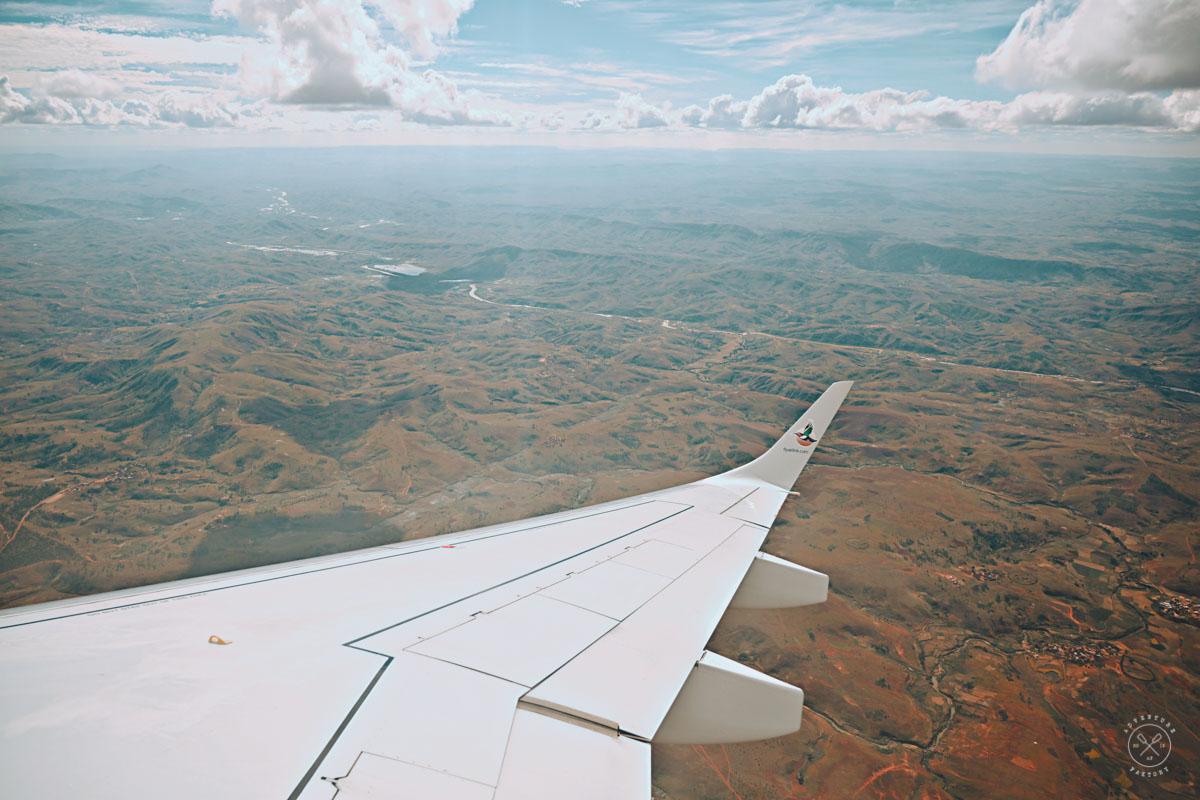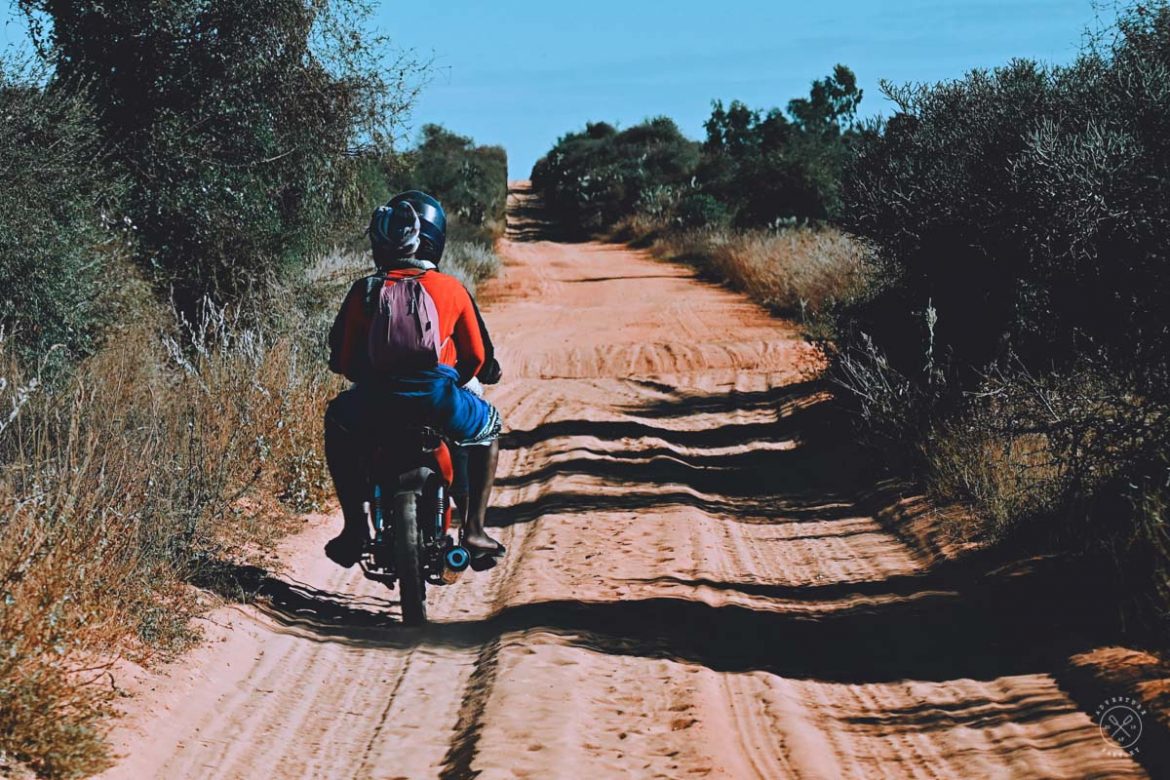Madagascar has been on my bucket list since I’ve watched Madagascar The Movie! Also, growing up watching Zoboomafoo (played in TVO Canada and PBS in the USA) always made me want to chase Lemurs, so we decided why not fit in a (long) stopover to this gigantic island of Madagascar, the world’s fourth largest island, as part of our epic Southern African trip.
Travelling to any new country is exciting for us and arriving in Madagascar was no exception to the rule. Just like that, after a 3-hour long flight direct from Johannesburg in South Africa to Antananavaro with Flyairlink, we landed in a tiny airport with a busy line to get inside the building. It was a bit hectic to get through and the immigration process had no signs or instructions on the actual procedures. Classic.

Arriving at Antananarivo International Airport: Madagascar Visa Process
We thought “oh my, this is going to be hectic”, and we were right. It took us a good hour to get everything done for immigration, a 3-step process starting with:
- Filling up the form given in the plane (if you didn’t get it, do like I did and sneak up to the front to ask for it and go back to your spot) and give the medical paper you filled to the first lady that will direct you to the next counter
- Visa payment counter: Pass them your passport and pay your visa fee. You can read more about the Visa for Madagascar here.
- Line up in the last queue to submit your receipt and passport to get your visa printed out and stamped.
After an hour at immigration, we had to wait for the last bag before lining up again to go on the exit line. Usually, you go through the “nothing to declare” line but you never know what happens and, obviously, on the day they made everyone line up to choose randomly who they would check and scan bags. We were lucky to be hushed away in the fast lane to exit without any bag scans.
For more details about Madagascar, read our guide about 13 Things you need to know when travelling to Madagascar.
SIM cards in Madagascar
When you land and pass right after immigration, there is a sketchy little Orange counter that sells SIM cards (and only takes cash) before leaving the luggage area (bag customs) but we recommend you to get to the final arrivals area of the airport to get better options. You can read How To Get The Best SIM card in Madagascar. In a nutshell, there is Orange, Airtel and the local provider Telma, which is the recommended option after comparing all the pricing and coverage. All around the country, you will find shops, like the below photo, offering credit recharges if you need more credit. Madagascar isn’t that bad after all in terms of connectivity! We were expecting the worse and being off the grid for the week-long trip but we couldn’t be more wrong about it.

Madagascar Local Currency
While lining up for SIM cards, we went to get money out of the ATM, it is recommended to have cash with you because you never know who takes the card cards. In general, everyone prefers you to use cash, so better be safe than sorry. 1$US is about 3,600 Ariary at the moment of our travels in 2019 but we recommend you to add the currency to the mobile app XE to get the live rates as you travel.
Driving into the Antananarivo City Centre
Madagascar is a poor country and 80% of the population is said to be living under the poverty line. Driving into the city centre and the country really confirmed the sad statistic. It is not recommended to walk at night anywhere, especially in the capital of Antananarivo. The people aren’t all bad though, Malagasy people are very friendly and grateful to have tourists to their country as they only have less than 400k visitors a year. As much as poverty is high, this shouldn’t stop you from encouraging the local economy by travelling to Madagascar.
Madagascar: Is this even Africa?
Rice paddies, green hills, buffalos looking animals (zebu) pulling carriages, TukTuks (Rickshaws) exactly like the ones in India and Sri Lanka and the people, many of whom look Asian as they are descended from Southern Asian boat-people that started to arrive in Madagascar approximately two thousand years ago. Yes, all of that which made us completely confused about being in Africa even!
Where is the forest in Madagascar?
In my head, Madagascar would be super dense of forests everywhere. I was wrong. There are many types of beautiful landscapes but definitely fewer forests than I imagined. Sadly deforestation has been huge in Madagascar due to many reasons. Farming is the biggest issue, sapphire mines being another one of the issues, rosewood traffic and unfortunately because of poverty, in order to survive, the local Malagasy people are using the forest in a destructive and unsustainable way. Deforestation is the reason why lemurs (and other species) are slowly disappearing. More than 80% of the forests are gone, half of them since the late 1950s which now the WWF is trying its best to protect.
Voilà, pretty much our first impressions of Madagascar in addition to useful information if you plan to travel here. We have made A Madagascar quick guide for short-time travellers, which you should check out to plan your next adventure! For more details about Madagascar, read our guide about 13 Things you need to know when travelling to Madagascar.
If you like this article, follow our Adventures on Facebook, YouTube, Twitter, Instagram @adventurefaktory, but most importantly sign up to our E-mail list to keep up with updates and travel trends + deals!
Disclaimer: We went to Madagascar with WAU Madagascar as part of a partnership. All our opinions, words photos and experiences are our own.





